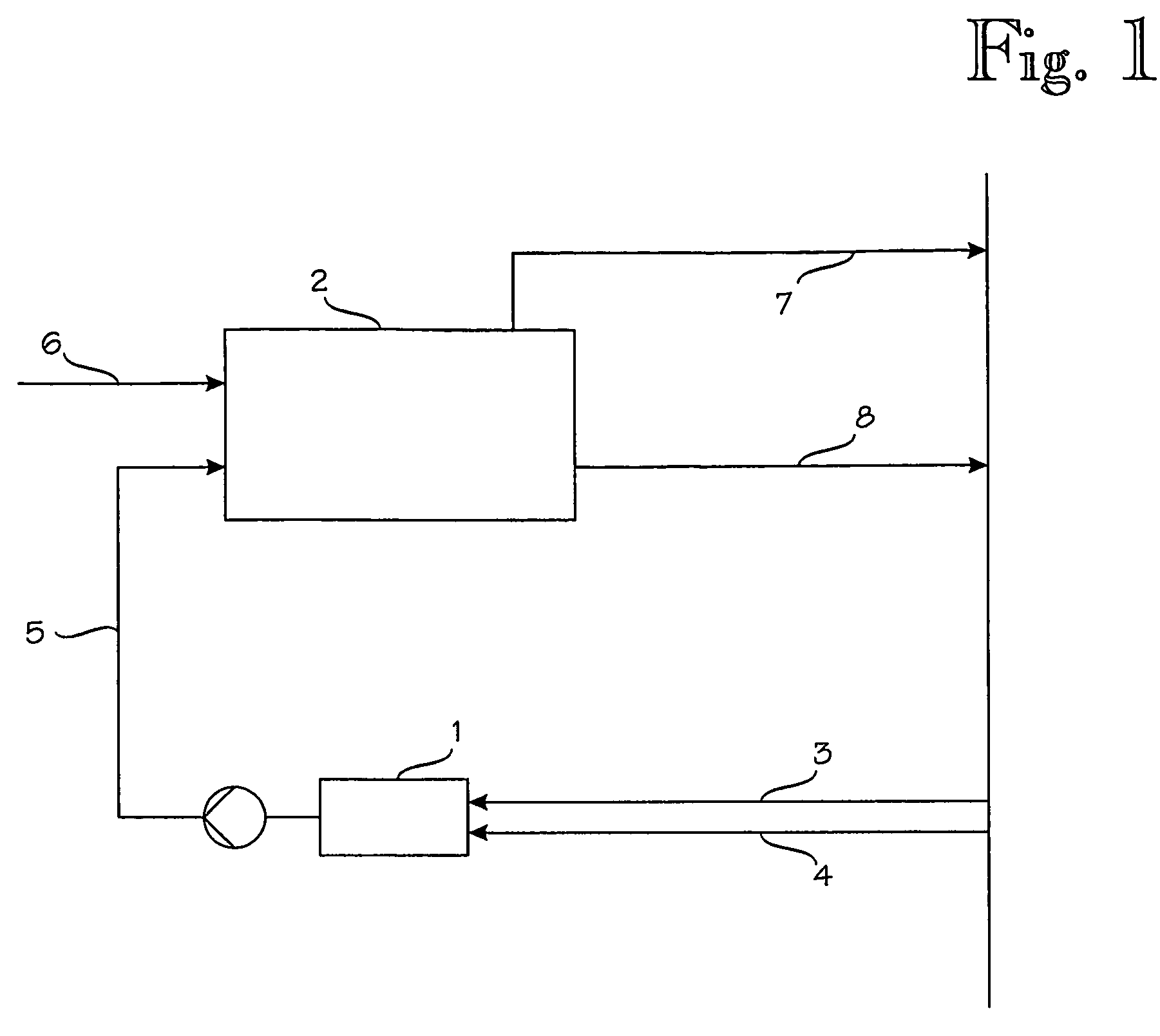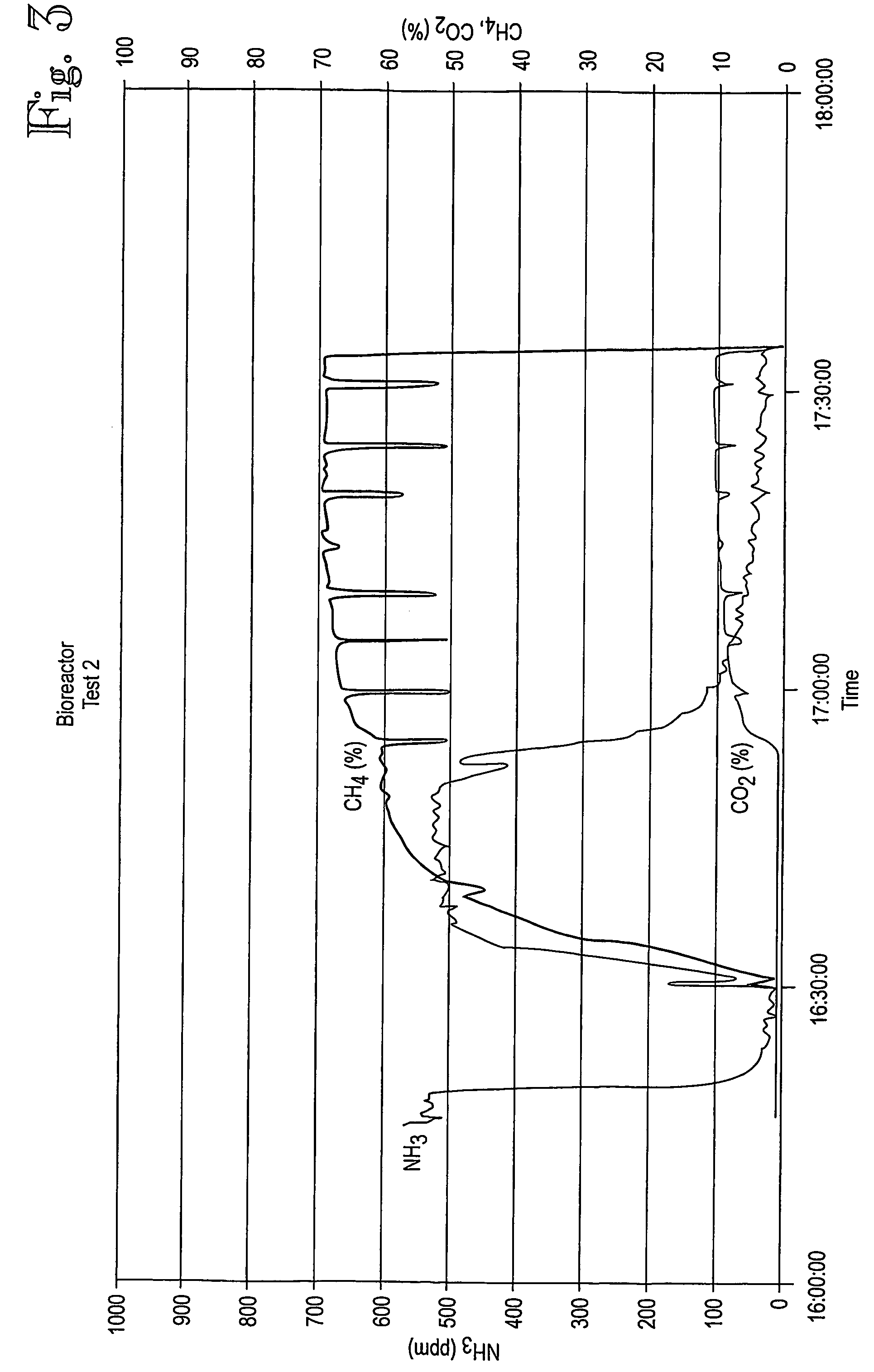Method and apparatus for processing organic material
a technology of organic material and processing method, which is applied in the field of organic material processing method, can solve the problems of inability to preserve acidic or basic, inability to function with microorganisms, and season-dependent availability of material to be processed, so as to facilitate storage and facilitate operation. , the effect of reducing the variation of ph
- Summary
- Abstract
- Description
- Claims
- Application Information
AI Technical Summary
Benefits of technology
Problems solved by technology
Method used
Image
Examples
examples
[0058]The following gas bottles were used in the tests:
[0059]
Methane CH499.5% Carbon dioxide CO2100%Ammonia NH3 0.5%Nitrogen N2100%
[0060]Gas yield and measuring equipment:
[0061]The contents used were obtained from the gas bottles by means of a gas diluter (Environics Inc.).
[0062]The contents of gases departing from the pressure vessel were measured by a FTIR gas analyzer (GASME™).
[0063]The test vessel was a pressure vessel of about 30 l, where the pressure was kept at about 4 bar during the gas feed.
[0064]Tests carried out:
[0065]The vessel contained about 25 l water, to which ammonium hydroxide was added, if necessary, to obtain the required ammonia content. Gas mixtures were fed into this solution with pressure.
[0066]The incoming total flow was kept at 5 l / min.
[0067]Tests in the ammonia solution:
[0068]Test 1
[0069]Nitrogen was first fed into water having an ammonia content of 2000 mg / l, whereby ammonia was released in gas form. After the content had stabilized, the following gas mix...
PUM
| Property | Measurement | Unit |
|---|---|---|
| pressure | aaaaa | aaaaa |
| pressure | aaaaa | aaaaa |
| pressure | aaaaa | aaaaa |
Abstract
Description
Claims
Application Information
 Login to View More
Login to View More - R&D
- Intellectual Property
- Life Sciences
- Materials
- Tech Scout
- Unparalleled Data Quality
- Higher Quality Content
- 60% Fewer Hallucinations
Browse by: Latest US Patents, China's latest patents, Technical Efficacy Thesaurus, Application Domain, Technology Topic, Popular Technical Reports.
© 2025 PatSnap. All rights reserved.Legal|Privacy policy|Modern Slavery Act Transparency Statement|Sitemap|About US| Contact US: help@patsnap.com



